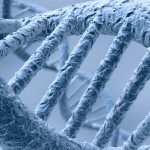Lien vers Pubmed [PMID] – 24598372
Int. J. Med. Microbiol. 2014 May;304(3-4):452-63
The genus Yersinia contains three species pathogenic for humans, one of which is the enteropathogen Yersinia pseudotuberculosis. A recent analysis by Multi Locus Sequence Typing (MLST) of the ‘Y. pseudotuberculosis complex’ revealed that this complex comprises three distinct populations: the Y. pestis/Y. pseudotuberculosis group, the recently described species Yersinia similis, and a third not yet characterized population designated ‘Korean Group’, because most strains were isolated in Korea. The aim of this study was to perform an in depth phenotypic and genetic characterization of the three populations composing the Y. pseudotuberculosis complex (excluding Y. pestis, which belonged to the Y. pseudotuberculosis cluster in the MLST analysis). Using a set of strains representative of each group, we found that the three populations had close metabolic properties, but were nonetheless distinguishable based on D-raffinose and D-melibiose fermentation, and on pyrazinamidase activity. Moreover, high-resolution electrospray mass spectrometry highlighted protein peaks characteristic of each population. Their 16S rRNA gene sequences shared high identity (≥99.5%), but specific nucleotide signatures for each group were identified. Multi-Locus Sequence Analysis also identified three genetically closely related but distinct populations. Finally, an Average Nucleotide Identity (ANI) analysis performed after sequencing the genomes of a subset of strains of each group also showed that intragroup identity (average for each group ≥99%) was higher than intergroup diversity (94.6-97.4%). Therefore, all phenotypic and genotypic traits studied concurred with the initial MLST data indicating that the Y. pseudotuberculosis complex comprises a third and clearly distinct population of strains forming a novel Yersinia species that we propose to designate Yersinia wautersii sp. nov. The isolation of some strains from humans, the detection of virulence genes (on the pYV and pVM82 plasmids, or encoding the superantigen ypmA) in some isolates, and the absence of pyrazinamidase activity (a hallmark of pathogenicity in the genus Yersinia) argue for the pathogenic potential of Y. wautersii.





